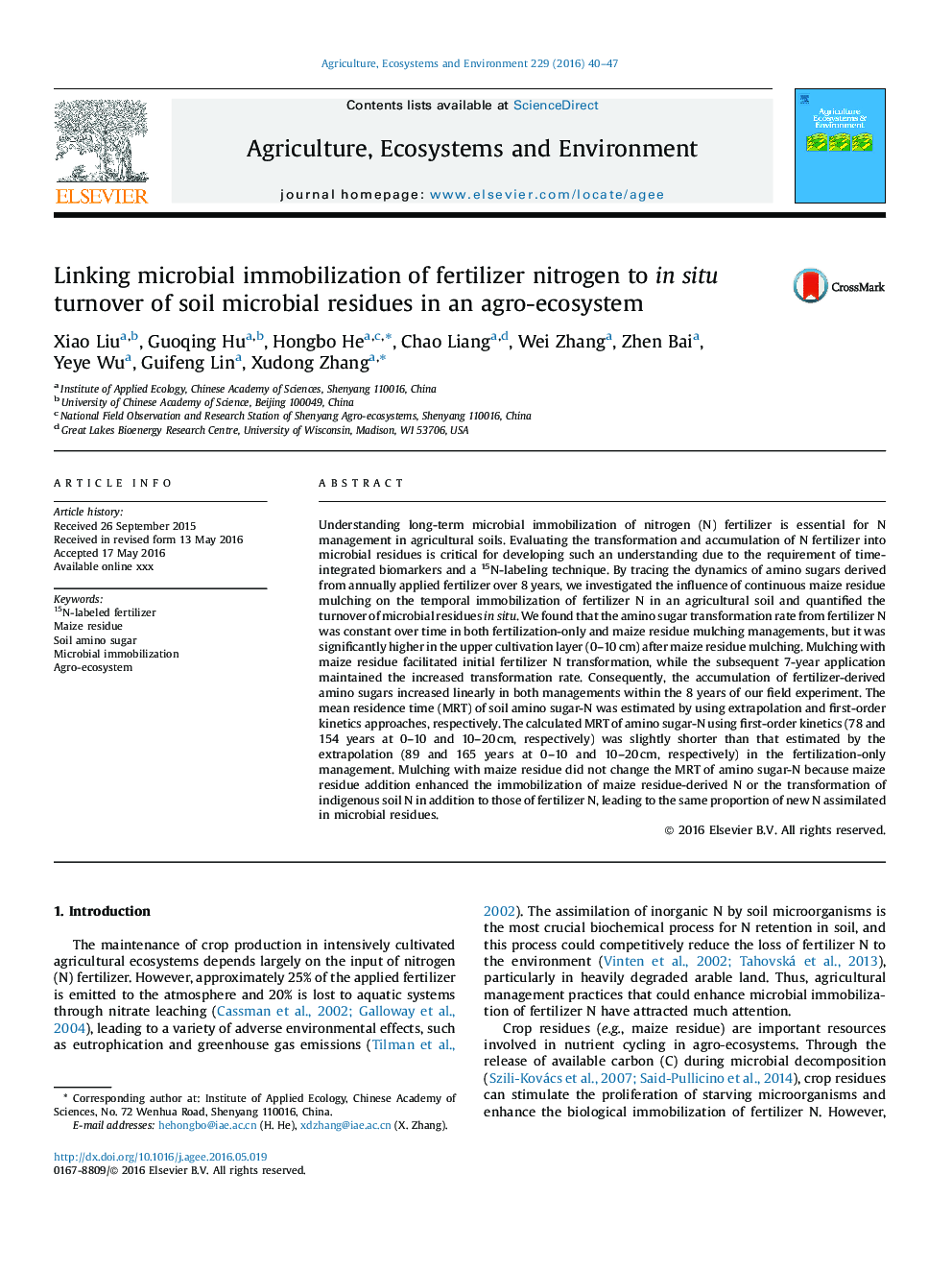| Article ID | Journal | Published Year | Pages | File Type |
|---|---|---|---|---|
| 8487411 | Agriculture, Ecosystems & Environment | 2016 | 8 Pages |
Abstract
Understanding long-term microbial immobilization of nitrogen (N) fertilizer is essential for N management in agricultural soils. Evaluating the transformation and accumulation of N fertilizer into microbial residues is critical for developing such an understanding due to the requirement of time-integrated biomarkers and a 15N-labeling technique. By tracing the dynamics of amino sugars derived from annually applied fertilizer over 8 years, we investigated the influence of continuous maize residue mulching on the temporal immobilization of fertilizer N in an agricultural soil and quantified the turnover of microbial residues in situ. We found that the amino sugar transformation rate from fertilizer N was constant over time in both fertilization-only and maize residue mulching managements, but it was significantly higher in the upper cultivation layer (0-10Â cm) after maize residue mulching. Mulching with maize residue facilitated initial fertilizer N transformation, while the subsequent 7-year application maintained the increased transformation rate. Consequently, the accumulation of fertilizer-derived amino sugars increased linearly in both managements within the 8 years of our field experiment. The mean residence time (MRT) of soil amino sugar-N was estimated by using extrapolation and first-order kinetics approaches, respectively. The calculated MRT of amino sugar-N using first-order kinetics (78 and 154 years at 0-10 and 10-20Â cm, respectively) was slightly shorter than that estimated by the extrapolation (89 and 165 years at 0-10 and 10-20Â cm, respectively) in the fertilization-only management. Mulching with maize residue did not change the MRT of amino sugar-N because maize residue addition enhanced the immobilization of maize residue-derived N or the transformation of indigenous soil N in addition to those of fertilizer N, leading to the same proportion of new N assimilated in microbial residues.
Related Topics
Life Sciences
Agricultural and Biological Sciences
Agronomy and Crop Science
Authors
Xiao Liu, Guoqing Hu, Hongbo He, Chao Liang, Wei Zhang, Zhen Bai, Yeye Wu, Guifeng Lin, Xudong Zhang,
